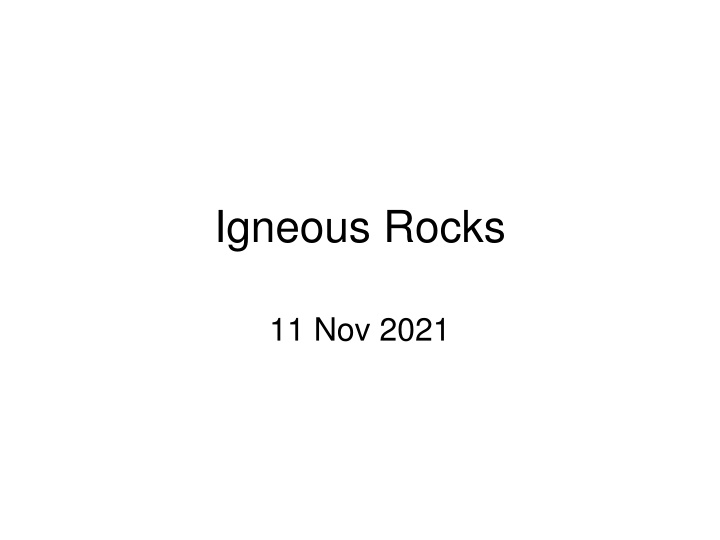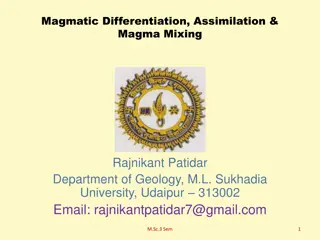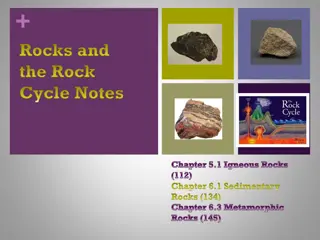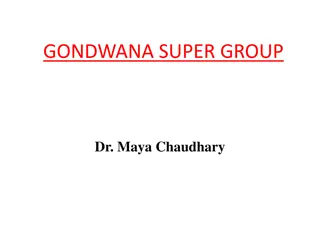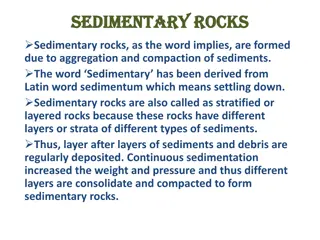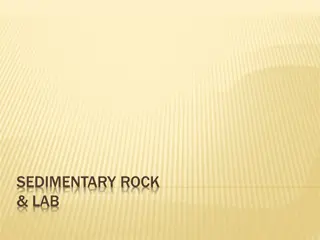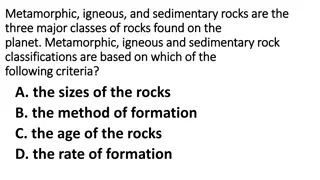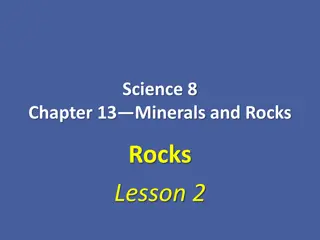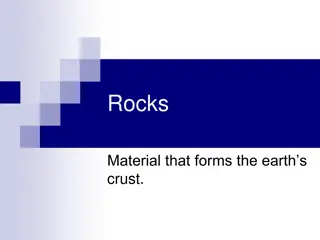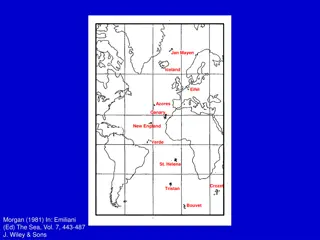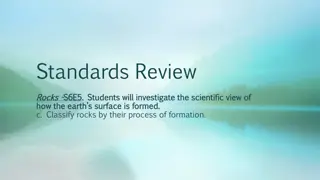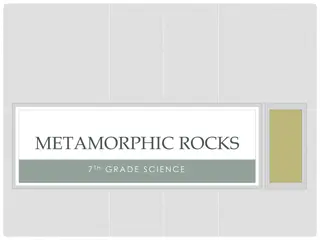Igneous Rocks and Their Characteristics
Explore the classification, formation, and characteristics of igneous rocks, including intrusive and extrusive types. Learn about the environments of formation and textures of igneous rocks, as well as their mineral compositions and distinct features such as glassy and vesicular textures. Understand the differences between mafic and felsic compositions in igneous rocks.
Download Presentation

Please find below an Image/Link to download the presentation.
The content on the website is provided AS IS for your information and personal use only. It may not be sold, licensed, or shared on other websites without obtaining consent from the author.If you encounter any issues during the download, it is possible that the publisher has removed the file from their server.
You are allowed to download the files provided on this website for personal or commercial use, subject to the condition that they are used lawfully. All files are the property of their respective owners.
The content on the website is provided AS IS for your information and personal use only. It may not be sold, licensed, or shared on other websites without obtaining consent from the author.
E N D
Presentation Transcript
Igneous Rocks 11 Nov 2021
Do Now 1. How are rocks classified? 2. What is an igneous rock? 3. What Earth Science related event occurred over the weekend? Rocks are classified by how they form Rock formed by the solidification of magma The clocks were set on standard time
Environments of Formation ESRT pg 6 ESRT pg 6
Environments of Formation Intrusive Igneous Rock rocks that form when magma hardens beneath Earth s surface. ** The slower MAGMA cools the larger the crystals *** Granite
Extrusive Igneous Rock When lava hardens on the Earth s surface. -Lava cools quickly, resulting in - Smaller crystals. Go to fullsize image - Vesicular texture (holes). Go to fullsize image - No Crystals at all (glassy).
Textures of Igneous Rocks Intrusive Coarse Grained Slow cooling results in the formation of large crystals. Fine Grained Rapid cooling of magma or lava results in rocks with small, interconnected mineral grains. Extrusive
Glassy Texture Ex: Obsidian Glassy texture results from cooling that is so fast that minerals do not have a chance to crystallize. Extrusive Vesicular Texture Ex: Pumice - Vesicles (holes, pores, or cavities) are the result of gas bubbles, which often occurs during volcanic eruptions.
Composition of Igneous Rocks Mafic Felsic a lighter color a darker color - a lower density - a higher density - rich in Silicon (Si) and Aluminum (Al) - rich in Iron (Fe) and Magnesium (Mg)
Mineral Composition of Igneous Rocks Rhyolite is made up of: - Potassium feldspar - Quartz - Plagioclase feldspar - Biotite (mica) - Amphibole
Mineral Composition of Igneous Rocks What is Gabbro made of? - Plagioclase feldspar - Biotite (mica) -Pyroxene - Olivine - Amphibole
Using your knowledge of earth science, your earth science reference tables and your class notes contrast Basalt and Granite in terms of how each forms, the texture of each, the color and the composition in your notebook. Basalt Granite Formation Texture Color Composition
